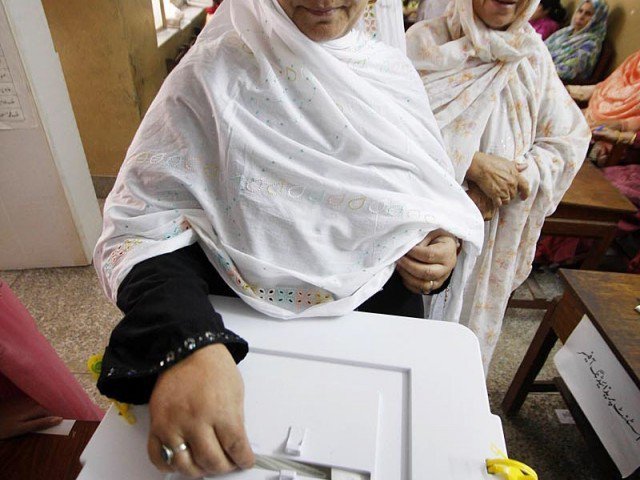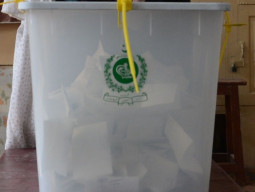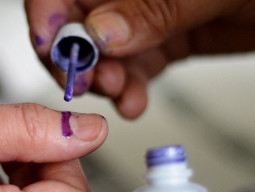
ISLAMABAD: The gap between the number of male and female voters in the country is widening at an alarming rate, reveals a report published by the Free and Fair Elections Network (Fafen) on Wednesday.
It says registered male voters outnumbered their female counterparts by 11.65 million in September 2015, when the Election Commission of Pakistan updated its electoral lists ahead of local government elections in Punjab and Sindh.
In contrast, there were 10.97 million more male voters than female voters before the May 2013 general elections, meaning the gap has increased by roughly 68,000 over the past two and a half years. This is despite the fact that the number of registered voters increased by 6.83 million – 3.74 million men and 3.07 million women – between 2013 and 2015.
The increase in disparity appears more drastic when compared to earlier levels. In 2008, there were 82 female registered voters for every 100 male voters, according to the Fafen report. Currently, the ratio stands at 75 female voters for every 100 male voters.
Some statisticians have even contested the authenticity of the total number of registered voters in Pakistan as no census has been conducted in the country since 1998.
“I think there should have been between 20 million to 22 million more voters given demographic trends and population estimates in Pakistan,” an official of the Pakistan Bureau of Statistics told The Express Tribune. According to officials, half of the country’s total population should be above 18 years of age.
Alarmingly, the gap between male and female voters widened in all provinces and in Islamabad.

In Punjab, the difference in male and female registered voters increased from 6.16 million in 2013 to 6.5 million in 2015. It grew from 1.98 million to 2.1 million in Sindh, from 1.74 million to 1.88 million in Khyber-Pakhtunkhwa and from 491,000 to 494,000 in Balochistan over the same timeframe. The gap also increased from 46,113 to 55,308 in the Islamabad Capital Territory in that period.
Interestingly, the gap narrowed in the Federal Administered Tribal Areas between 2013 and 2015, going down from 549,549 to 536,239. When contacted, an ECP spokesman blamed the widening of the gap on fewer women applying for Computerised National Identity Cards (CNICs) upon turning 18.
He said under the new procedure adopted by the ECP, a person is automatically placed on the voters’ list upon receiving a CNIC.
Meanwhile, Fafen in its report urged the ECP and all political parties to undertake efforts to maximise the registration of female voters ahead of the 2018 general elections.
“With more than 11.5 million female eligible voters not registered, Fafen urges the ECP to declare a women voters’ registration emergency and to redouble efforts in cooperation with the National Database Registration Authority (NADRA),” it said.
“NADRA’s partnership is needed because one major reason for the growing gap between male and female registration is the unwillingness or inability of many women to acquire a CNIC,” Fafen added.
Published in The Express Tribune, November 26th, 2015.























1711457205-0/US-Baltimore-Bridge-Collapse-(1)1711457205-0-270x192.webp)
























COMMENTS
Comments are moderated and generally will be posted if they are on-topic and not abusive.
For more information, please see our Comments FAQ